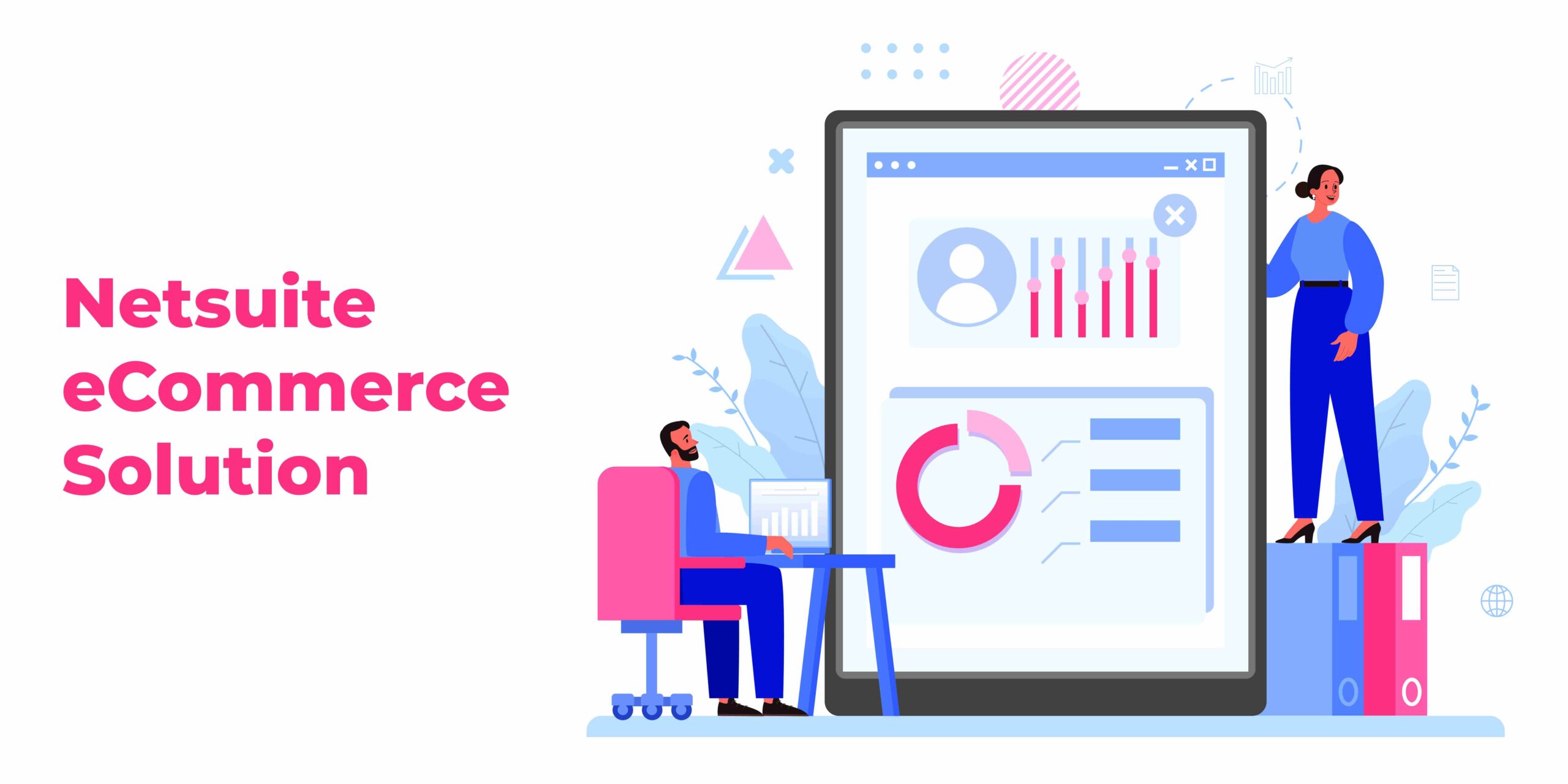It is little wonder that people often refer to the NetSuite eCommerce solution as “NetSuite OneWorld.” It is because the developers designed it to cater to businesses with global operations and multiple subsidiaries. “OneWorld” reflects its ability to unify and manage various aspects of international business operations within a single system.
The NetSuite eCommerce solution enables businesses to handle multiple currencies, taxation, and legal compliance differences. It consolidates regional and global operations, implementing standard business processes across divisions and subsidiaries.
Integrating NetSuite with Shopify
The NetSuite eCommerce solution lets you connect your Shopify store to NetSuite and efficiently manage orders and refunds. By integrating these platforms, you can streamline your operations. You can eliminate manual data entry and ensure accurate synchronization of order details. NetSuite eCommerce solution offers powerful features for inventory management, order processing, and handling refunds. It enhances efficiency and provides a seamless customer experience.
Let’s dive into the steps required to establish this integration and unleash the full potential of your Shopify and NetSuite combination.
1. Access Order Information in Shopify
Move to the Shopify Admin page, where you can access customer and order information such as names, addresses, purchased items, and pricing. You can import the configured standard order information into the NetSuite eCommerce solution.
Using Shopify’s API, you can also bring in additional data like the notes field. Although this information is not imported into NetSuite by default, you can configure it in the mapping section of the NetSuite connector.
2. Navigate to the Netsuite Interface and Bring Order to Netsuite Connector
The NetSuite Connector interface is the central hub between NetSuite and Shopify. The developers have automated importing orders in the NetSuite eCommerce solution, but you can also utilize the built-in Connector tools to import the data. Your order will enter the NetSuite Connector when you go to the Shopify order screen, click “Retrieve,” and enter the Shopify order number. It allows the data from Shopify to be imported into NetSuite to create a sales order.
3. Create the Order within Netsuite
You can view the Shopify Order number, billing, shipping information, and item details within the NetSuite Connector interface. This NetSuite eCommerce solution integration enables the creation of accurate sales orders. You can map the data from Shopify to NetSuite by clicking on “Show Order Mapping.”
It provides a detailed overview of which fields in NetSuite will receive specific data from Shopify. Once you are satisfied with the mapping, proceed by clicking “Post Order to NS,” initiating the import of the order information. The process is successful when you see the “Order Posted, Waiting For Shipment” message indicating that NetSuite has created the order on its platform.
4. View the Order on Netsuite
To view and fulfill the order, navigate to NetSuite. You can quickly locate the corresponding Sales Order in the NetSuite eCommerce solution platform. Type the Shopify order number into the global search bar. Clicking on it will take you to the sales order page. Here, you can review the customer details, item information, shipping details, and pricing information, as seen in the NetSuite Connector.
5. Check Payment
Under the “Related Records” section, you can observe that NetSuite has automatically created a customer deposit to track the credit card payment right from the beginning. You can configure this option of the NetSuite eCommerce solution during the initial setup process. It provides a convenient way to manage payments. With everything in place, you can now fulfill the sales order and complete the transaction.
6. Fulfill the Order in NetSuite
You will now utilize the logistics connector to automate the shipment processing and generate item fulfillment in NetSuite (NS). However, you also have the option to perform this task manually.
By clicking on “Fulfill” at the top of the screen, you can enter a tracking number in the “Packages” tab. This tracking number in the NetSuite eCommerce solution will pass through the connector, and one can view it in Shopify. After entering the information, click “Save” and return to the connector to push the data through.
7. View the Tracking Number in Shopify
Hover over the pencil icon and select “Upload Shipment from NS.” Like order synchronization, this process occurs seamlessly in the background within the live NetSuite environment. Once the order status changes to “Complete,” it signifies that it has successfully pushed the tracking number to Shopify. To view it, head over to Shopify.
After refreshing the screen, you’ll notice that the Shopify order is now in the “Fulfilled” status. It displays the tracking number entered into NetSuite. At this point, you can consider the order complete in both NetSuite and Shopify. All necessary updates and information are now in synchrony between the two platforms.
How Do I Handle a Customer Refund with NetSuite Connector?
To handle a customer refund, navigate to the Shopify Admin page and click on “Refund.” Enter the quantity and shipping amount to be refunded, and proceed by clicking the refund button. Returning to the NetSuite eCommerce solution connector, import the refund data and create a Credit Memo.
In the NetSuite Connector, under “Other Transactions,” click on “Retrieve” and enter the Shopify order number. A success message confirms that you can import the refund into NetSuite. Hovering over the pencil icon, click “Post” to create the Credit Memo.
Head back to NetSuite to verify the Credit Memo in NetSuite one last time. Locate and view the Credit Memo by typing the Shopify order number into the global search bar. It completes the refund synchronization process through the NetSuite Connector. You can also sync refunds from the NetSuite eCommerce solution to Shopify in the reverse direction.
Conclusion
The NetSuite Connector provides a powerful solution for seamlessly integrating Shopify and NetSuite eCommerce solutions. It enhances order management and refund processing capabilities.
By establishing a connection between the two platforms, businesses can automate the import of order information, create sales orders in NetSuite, and efficiently fulfill orders. The NetSuite eCommerce solution connector also enables the synchronization of refunds, ensuring accurate tracking and management of customer refunds.
If you require assistance with NetSuite integrations, Vserveecommerce is the perfect solution. With our expertise in NetSuite integration services, we can help seamlessly connect your business systems and optimize your operations. Trust Vserveecommerce to provide reliable and comprehensive support for all your NetSuite integration needs.
This blog is inspired by the video,’NetSuite Shopify Connector Overview’ by ‘Netsuite.’





